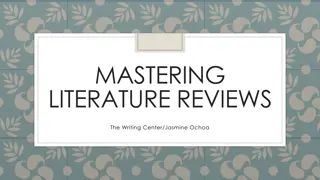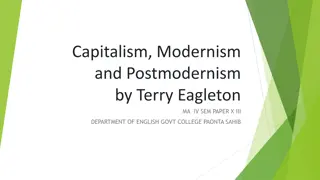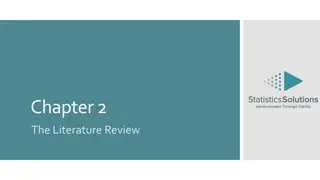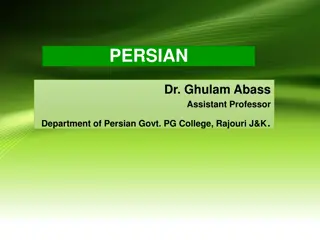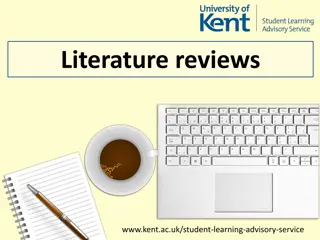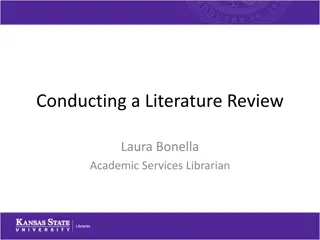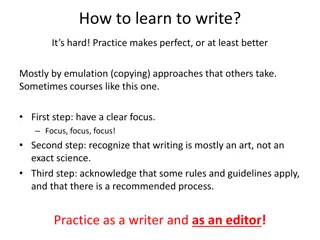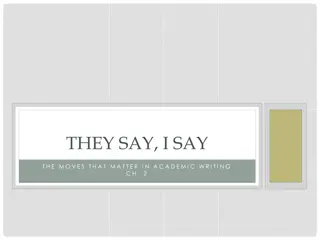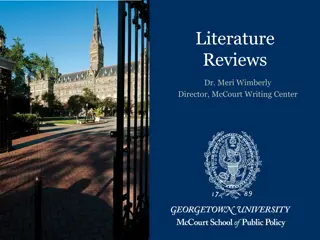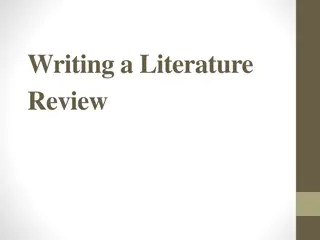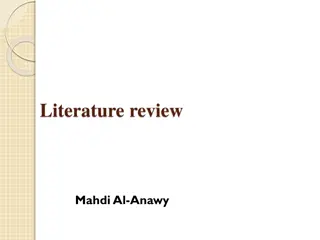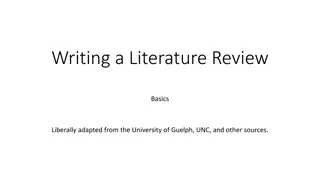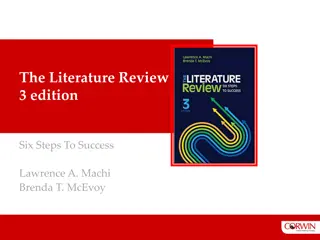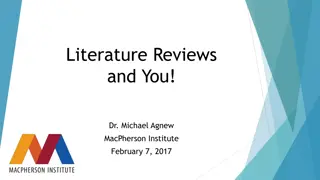Mastering the Art of Writing a Literature Review
Understanding the essence of a literature review, its significance, steps involved in writing one, the structure it should follow, from introduction to conclusion, and organizing arguments effectively.
Download Presentation

Please find below an Image/Link to download the presentation.
The content on the website is provided AS IS for your information and personal use only. It may not be sold, licensed, or shared on other websites without obtaining consent from the author. Download presentation by click this link. If you encounter any issues during the download, it is possible that the publisher has removed the file from their server.
E N D
Presentation Transcript
What is literature review? Major works Reviewed (Snapshots) Relationship Literature review Introduction Results Methods Discussion
Why do a literature review? Provide background information/importance needed to understand your research Improve your understanding on the research topic Places your research as one link in a chain of research in your field (understand what came before you) Justify the research, Critique previous research and Identify gaps or controversies in previous research
Steps for writing a literature review Collect sources Analyze/Scan (Abstract, Conclusion) Summarize Synthesize/Categorize Drafting/Integrate
STRUCTURE of your literature review Title Introduction Body (Arguments/Results) Conclusion Bibliography/References
Introduction Make it brief (~1/5 of the paper s total length) Introduce the research topic (what it is, why does it matter) Frame the story: Tell the reader why it is important that you reviewed the literature in your topic area Briefly outline how you have organized the review
BODY Headings. Use theme headings to organize your argument Describe important results/findings and explain how those results shape our current understanding of the topic Compare the studies if need be, to discuss their implications (i.e., your interpretation of what the studies show and whether there are important differences or similarities) Use figures/tables to present your own synthesis of original data/interpretation
How to organize your Arguments/ideas (The body) Topical Compare-Contrast Advantages-Disadvantages Cause-Effect Problem-Solution Chronological
Topical/Thematic Purpose: Describe various types of wine I. Red Wines I. Red Wines A. European B. Californian II. White Wines II. White Wines A. European B. Californian
COMPARE-CONTRAST Purpose: To help readers make an informed decision about whether to attend a two-year college or a four-year university I. Cost of Tuition I. Cost of Tuition 1. Two-year 2. Four-year II. Quality of Education II. Quality of Education 1. Two-year 2. Four-year
ADVANTAGES-DISADVANTAGES Purpose: Advantages and disadvantages of attending a two-year college I. Advantages I. Advantages 1. Cost 2. Accessibility II. Disadvantages II. Disadvantages 1. Number of educational programs 2. Quality of instruction
CAUSE-EFFECT Purpose: Explain the causes of conflict escalation and their effects I. Causes of Conflict Escalation I. Causes of Conflict Escalation 1. Expanding the issues 2. Personal attacks II. Effects of these causes II. Effects of these causes 1. Lose focus on original issue 2. Cycle of defensive responses 3. Negative emotions
PROBLEM-SOLUTION Purpose: To persuade his readers to ride bicycles as their primary form of transportation I. Problem: Motorized Transportation I. Problem: Motorized Transportation 1. Increasing traffic congestion 2. Increasing pollution 3. Increasing road rage from traffic-related stress II. Solution: Riding Bicycles II. Solution: Riding Bicycles 1. Reduces number of vehicles in use 2. Is not a source of pollution 3. Has physical and psychological health benefits
Chronological Purpose: Historical development and evolution of the city of Seattle I. 1920 I. 1920- -1945 1945 1. Significant Event #1 2. Significant Event #2 II. 1945 II. 1945- -1970 1970 1. Significant Event #1 2. Significant Event #2
How to organize your Argument/ideas (The body) Questions- Answers Series of Advancement Geographical Ancient- Modern Myths- Realities Effective- Ineffective
CONCLUSION Final evaluation, summation of major points Point out the significance of these results Discuss the questions that remain in the area Keep it brief
REFERENCES 8-12 sources accurate in-text citations complete and correct citations for every source
STRATEGIES FOR LITERATURE REVIEW Outline of literature review Mind Mapping
Synthesizing Literature http://gseacademic.harvard.edu/~instruct/gutman_library/litreview/synthesize/pla yer.html
What does it mean to Synthesize Articles? What it is not .. What it is .. separate parts/ideas lined up next to one another Integration of support from more than one source for one idea/argument Identification of how sources are related
Attribution Verbs instead of says Specific verbs to use to cite someone else s opinion or information. Examples: Adds Acknowledges Analyzes Analyzes Asserts Believes Claims Comments Concludes Concludes Expresses Declares Defines Describes Describes Emphasizes Finds Illustrates Illustrates Implies Implies Indicates Interprets Proposes Reasons States
Sexual harassment has many consequences. Adams, Kottke, and Brown (1983) found that some women students said they avoided taking a class or working with certain professors because of the risk of harassment. They also found that men and women students reacted differently. Their research was a survey of 1,000 men and women graduate and undergraduate students. Benson and Thomson's study in Social Problems (1982) lists many problems created by sexual harassment. In their excellent book, The Lecherous Professor, Whiles and Walker (1990) give a long list of difficulties that victims have suffered. The victims of sexual harassment suffer a range of consequences, from lowered self- esteem and loss of self-confidence to withdrawal from social interaction, changed career goals, and depression (Adams, Kottke, and Brown, 1983; Benson and Thomson, 1982; Whiles and Walker, 1990). For example, Adams, Kottke, and Padgitt (1983) noted that 13 percent of women students said they avoided taking a class or working with certain professors because of the risk of harassment.
Assignment 1) Does the introduction clearly present the research topic (including context, problem, purpose)? 2) Does the introduction highlight an outline as to how the review is organized? 3) Does the writer use one of the discussed strategies to organize their arguments/ideas? 4) Does the conclusion present a judgement idea to effectively end the review? 5) Does the writer use punctuation properly? Does the writer make use of hyphen, colons and semi-colons when appropriate? 6) Any suggestion to improve the review?

 undefined
undefined

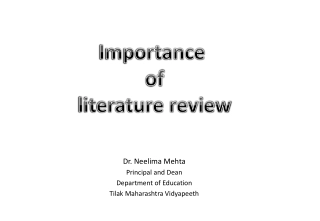
![[PDF⚡READ❤ONLINE] In Ruins: A Journey Through History, Art, and Literature](/thumb/20543/pdf-read-online-in-ruins-a-journey-through-history-art-and-literature.jpg)

